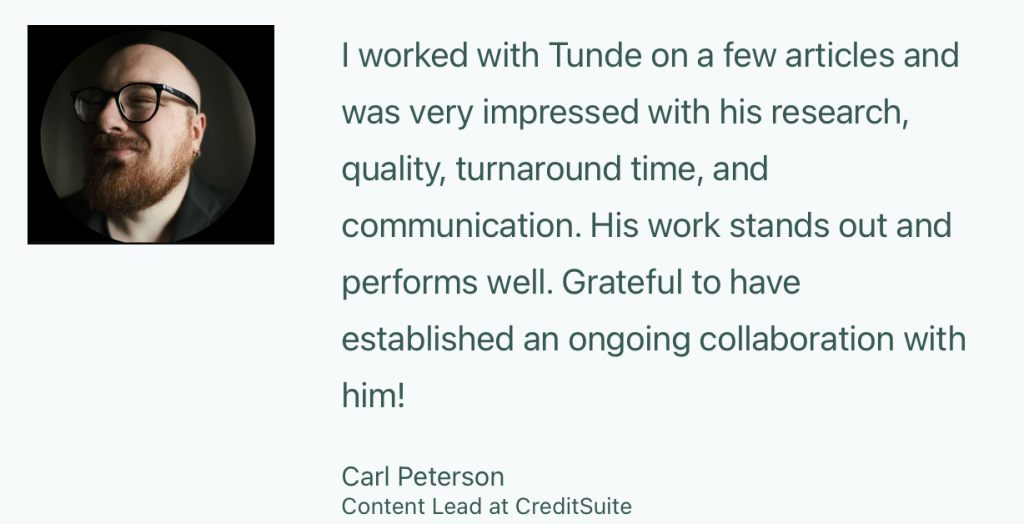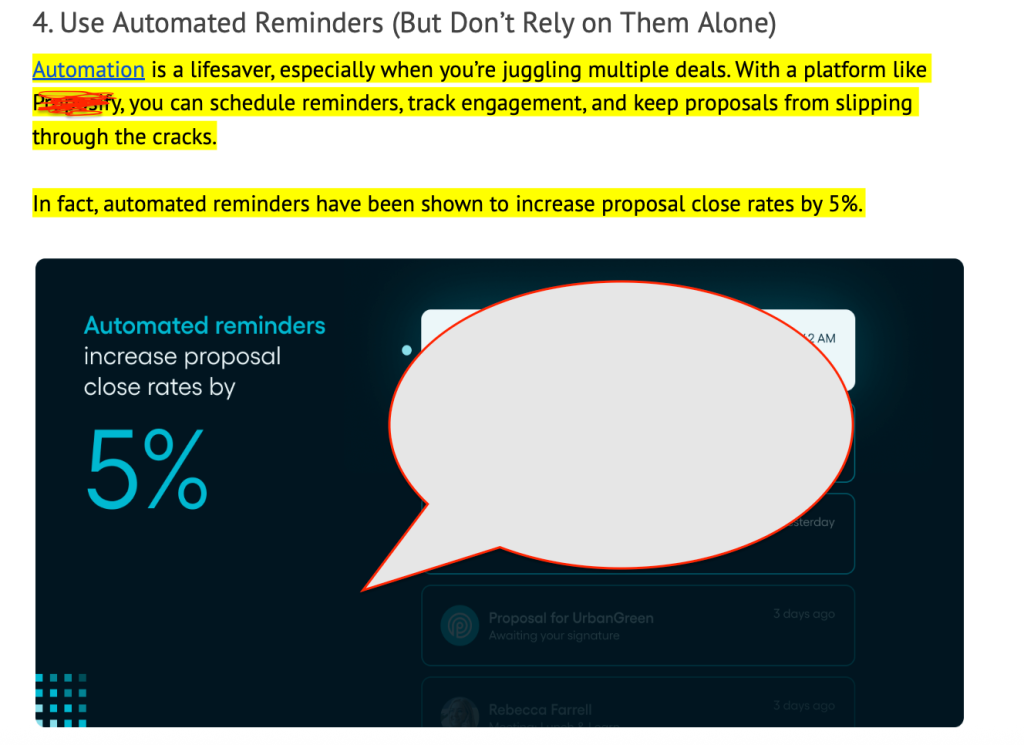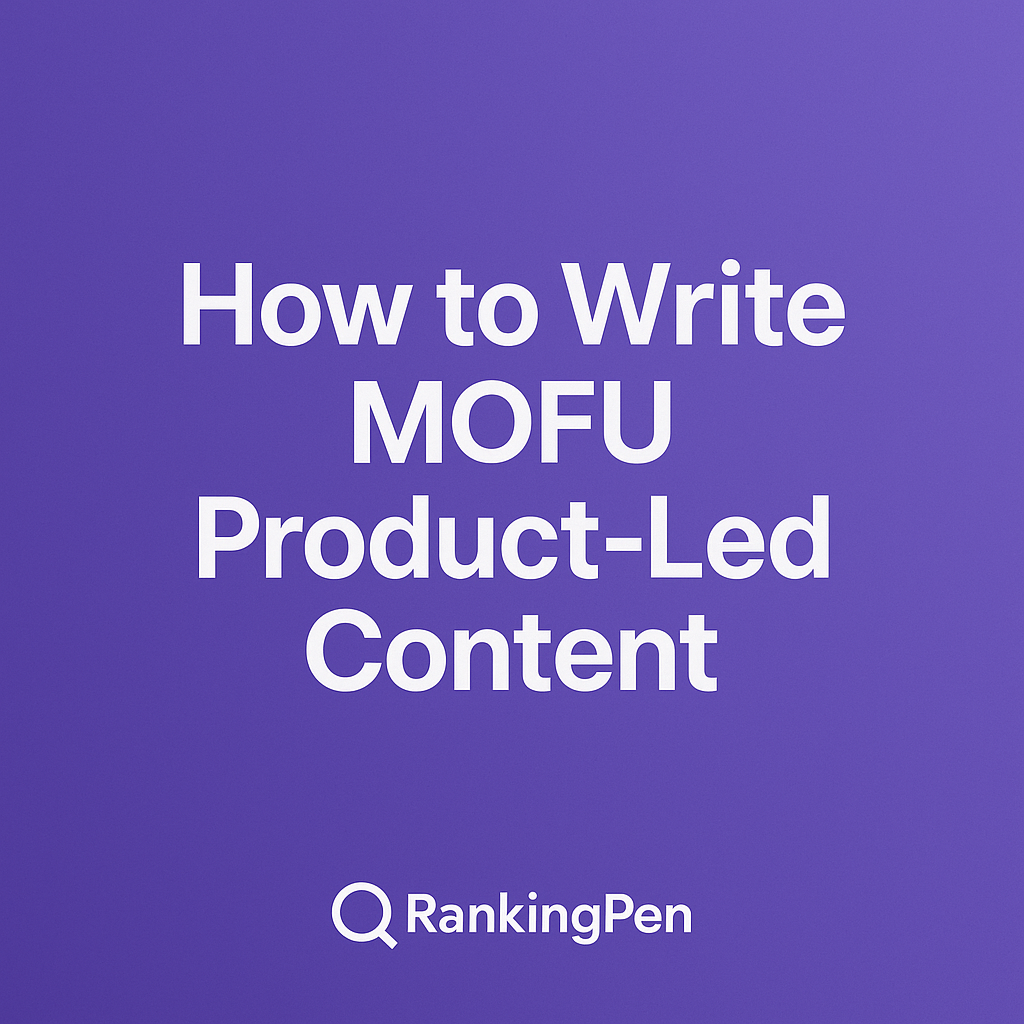Quick Summary
Middle-of-funnel content should move readers from just curious to ready to try. This guide shows how to uncover the real buyer question, craft a hook in their words, weave your product in naturally, add proof that builds trust, and close with a call to action that feels like the next step.
How Do You Move SaaS Prospects From ‘Just Looking’ to ‘Let’s Try It’?
You have one assignment with a MOFU product-led content: take the reader from curiosity to confident action. Yes, I mean from merely understanding their problem to believing your product is the natural next step.
It’s only when you guide them through that transformation that they can trust your product to solve the exact challenge keeping them stuck.
I’ve consistently taken readers from “just researching” to “ready to trial” after writing dozens of product-led MOFU pieces in the past thirteen months.
So let me show you exactly how to write content that earns that trust and turns middle-of-funnel traffic into real customers.
Why Listen to Me?
At RankingPen, I help SaaS brands turn ideas into content that wins customers. I create bottom-of-funnel pages, product-led blog posts, comparison guides, andSEO strategies that convert. This guide distills the same approach I’ve used to write dozens of product-led pieces that move readers from research to action.
And clients notice. Here’s what one of them said about working with me:

Every step you’ll find here is the process I use daily to help SaaS teams earn trust and turn traffic into paying users.
What Is MOFU Product-Led Content
MOFU (Middle of Funnel) product-led content is written for readers who already know their problem exists and are actively looking for the right way to solve it.
They’re asking questions like:
- ‘’How can I streamline this process without hiring more people?”
- “What’s the best way to onboard new users at scale?”
- “Which approach will save the most time as we grow?”
At this stage, they don’t need a 101 explainer, they need proof and a plan. Your job is tocreate content that shows, step by step, how your product solves their challenge better than alternatives.
As a SaaS brand, this is your chance to connect solutions to products, positioning your tool as the logical next move.
But there’s a fine line.
If you lean too hard on the sale, you’ll chase away readers who feel like you’re pitching for your own gain.
The best MOFU content teaches first and sells by demonstration, so the product becomes the natural conclusion, not an intrusive interruption.
Examples of MOFU Product-Led Content
Even though MOFU content has one goal which is to guide readers from problem-aware to solution-ready, it can show up in different formats. Here are some of the most effective ones:
Advanced How-To / Implementation Guides
Teach a solution while showing your product naturally in the workflow.
- “How to Cut Customer Onboarding Time in Half Using [Your SaaS].”
- “How to Build a Multi-Step Automation in Under 20 Minutes with [Tool Name].”
Use-Case or Role-Based Playbooks
Industry- or role-specific guides that connect product capabilities to the reader’s world.
- “Payroll Software for Schools.”
- “Project Management for Remote-First Agencies.”
Data-Backed Insight Reports
Research or benchmark pieces that surface a problem and smoothly demonstrate how your product addresses it.
- “State of Remote Work 2025: Why Teams Lose 10 hrs/week to Context Switching (and How [Your SaaS] Fixes It).”
Actionable Templates, Checklists, or Calculators
Resources readers can use immediately and that work best inside your product.
- “Customer Health Score Calculator—Built in [Your SaaS].”
- “Campaign Planning Template That Plugs Right Into [Tool Name].”
How to Write MOFU Product-Led Content (Step by Step)
Since you’ve nailed the goal and the key formats, let’s dive into the exact process I follow to take a reader from curiosity to confident action.
1. Pinpoint the Exact Middle-Stage Intent
Before you write a single line, stop and ask: What question is my ideal buyer actually asking right now?
That single question decides everything; your hook, your outline, the examples you choose, even how you wrap the CTA. This is where you don’t guess, you source it.
I usually start on Reddit, where people talk in plain, unfiltered language.
Exactly where I go depends on the topic:
- SaaS growth → r/SaaS, r/ProductManagement
- Marketing → r/marketing, r/SEO
- Finance → r/finance or any tight niche community
Once inside the right subreddits, I’m hunting for the raw stuff:
- recurring “how do I ___ without ___?” questions
- timing worries (“when is too soon to…”)
- side-by-side tool comparisons
- exact phrases worth reusing as hooks or subheads
From those threads I pull a one-sentence intent line and pin it at the top of my draft, like:
‘’They want to cut onboarding time without adding headcount, and they need a plan that works in the next sprint.’’
That single sentence shapes the entire piece.
For example, in a proposal-follow-up article I wrote, the hidden question wasn’t “what is a follow-up?”— it was “how do I follow up without sounding desperate or letting the deal die?”
This insight shaped the intro and several other sections.

As you can see, that one hidden question didn’t just give me a stronger hook. It set the direction for the whole piece. Every section, from timing follow-ups to using engagement signals, was built to answer it.
Later sections mapped actions to buyer signals for the same reason.
Instead of a generic “email on day three,” I wrote, “If they opened the proposal three times in one day, reach out immediately.”
Reddit is usually my first pass, but not my only one. I’ll also pull language and insights from:
- Customer interviews to confirm stakes and vocabulary
- Sales calls to catch where deals actually stall
- Support tickets (if I can get them) to surface edge cases worth pre-empting
The goal here isn’t to draft a copy. It’s to lock the real question (in their words) and map the pressure points and proof you’ll need.
Once that’s clear, the hook and outline almost write themselves.
2. Turn Insights Into a Magnetic Hook & Outline
Now that you know exactly what your reader is asking, shape an opening and a route that makes it impossible for them to click away.
Lead with their words
Your hook should sound like it was lifted straight from their Reddit thread or sales call.
- Pain + reality check:
“Think sending a proposal is enough to close the deal? Not even close.” - Outcome first:
“You want faster onboarding without adding headcount. Here’s how to get it.”
No warm-up paragraphs. Drop the tension and promise the payoff in the first few lines.
Map the journey, not just headers
Don’t treat this like a table of contents. Build a sequence that walks the reader from pain to action.
A simple flow that works almost every time:
- Why it matters now – the stakes and cost of doing nothing
- The method that works – the step-by-step plan
- How it looks in practice – your product in motion
- Proof it’s real – data, quotes, visuals
- Next move – the lowest-friction action they can take today
In that proposal-follow-up piece I referenced earlier, every H2 followed this arc:
why follow-ups matter → when to reach out → how to use signals → automation with a human touch → close with clarity.
Seed the product quietly
Decide now where the product belongs so it feels baked in from the start. Maybe a screenshot that shows a key step or a side note that connects a feature to the process.
For example:
“Here’s how to use [your saas] to see who opened your proposal and when, so every follow-up is timed to real behavior.”
The product should feel like part of the solution from the outline stage, not an afterthought you bolt on later.
3. Weave the Product In Without Sounding Salesy
Middle-stage readers don’t want a pitch, they want a plan that works. Your job is to show how your product makes that plan possible without breaking the teaching flow.
Treat the product like a tool, not a headline
Write the step first, then slip the product into the action:
For instance, if the step is ‘’track proposal engagement’’, and you’ve already explained why timing matters, you can simply guide the reader with something like:
“Here’s how to use [your SaaS] to spot who’s viewed the document and where they lingered so you can time your next move.”
A short screenshot or quick GIF of that feature in action is all you need.
Match each feature to the pain it fixes
Every mention should feel like an answer, not a detour.
- Pain: “I don’t know if they even opened it.”
- Natural product drop: “Require a quick sign-in to see exactly who’s engaged.”
The product becomes the obvious way to remove the blocker you just described.
Lean on proof, not hype
Skip lines like “this boosts close rates.” Show numbers or a quick before/after snapshot instead. If you’ve got internal data, a mini-case, or a one-line quote, tuck it right beside the feature. See an example below;

Keep the language plain
Forget marketing adjectives. Write like you’re sharing a pro tip with a teammate:
“Click ‘Identify to View’ and you’ll know who’s reading before you follow up.”
It reads like help, not a pitch.
When the product is built into the solution this way, readers feel equipped and not being sold to.
By the time they hit your call to action, signing up is simply the next logical step in a plan they already trust.
4. Add Trust Multipliers
Even with a solid plan and a product that fits, readers still wonder: Will this really work for a team like mine? Your job is to give proof so strong that question disappears.
Let real voices do the talking
A short client quote or one-paragraph mini-case says more than a page of copy:
Imagine a client saying “We cut deal cycles by 25% once we stopped guessing and timed follow-ups to actual engagement.”
It already tells the story, shows the result, and builds credibility without you needing to add a single superlative.
Show, don’t just tell
Screenshots, a quick GIF, or a simple before/after chart turn claims into something visual and undeniable.
Borrow outside authority if it fits
An industry benchmark, a third-party stat, or a mention in a respected roundup quietly strengthens credibility without breaking the flow.
By the time readers reach your close, they’ve seen the evidence with their own eyes.
They don’t need convincing. The data and stories have already done the work.
5. Close With a High-Confidence CTA
If you’ve done the work—clear intent, strong hook, product woven in, and proof stacked—the close should feel like the next natural click.
Make the action crystal clear and low-friction.
Skip “Sign up today.”
Say exactly what happens next:
“Start a free trial and send your first tracked proposal in minutes.”
A single, concrete line tells them both the action and the payoff.
Ready to Turn Readers Into Trial Users?
You’ve got the full framework to write MOFU product-led content that earns trust and drives action. But if you’d rather have an expert handle it, RankingPen can help.
We plan, research, and write product-led pieces that rank, convert, and keep working long after launch.
Work with the best content writing agency. Let’s create content that turns “just looking” into “ready to try.”
Book a free content strategy call here.

